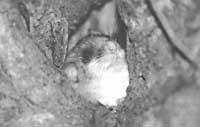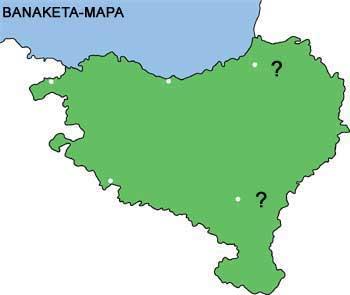Hibernation
1995/12/01 Agirrebeña Berasategi, Rosa Iturria: Elhuyar aldizkaria
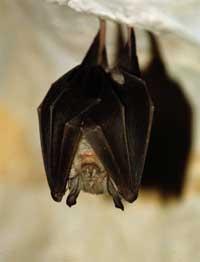
Some animals alter the temperature of your body based on room temperature. These are the so-called poikilothermal ones. Thus, when the middle temperature drops, they also lower the body temperature adapting to the new situation. This is the case of snakes and lizards.
Snakes, wilds, apous, earthworms and many insects find shelter from the freezing line of the earth.
Homeothermics, despite changing the ambient temperature, maintain the stable temperature of your body. For example, birds and mammals. Other species (frogs, turtles, fish, river crabs or freshwater bivalves) winter in their dens. The water temperature is maintained at 4°C.
Homeothermia is a physiological regulation of body temperature. However, birds and mammals are not always homeothermal, but in most cases, and in cold environments, the temperature remains high thanks to the heat that is produced metabolically. In cold environments, mammals and birds seek refuge in tree or other holes. Small mammals build galleries underground or under snow; some birds, like the white partridge, pierce tunnels in the snow. Many species of birds and some mammals migrate in winter to warmer areas in search of refuge.
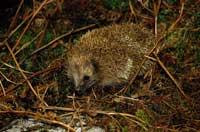
Although birds and mammals act as homeotherm and maintain stable and high body temperature, many mammals and some birds have the ability to lower their body temperature. There are four ways to control this temperature: hibernation, stowage, daily lethargy and “winter sleep.” The latter uses bears, raccoons, skunks and various mammals.
These animals sleep for a long time in protected microhabitats such as simas or tree holes. This allows you to lower your body temperature just a few degrees, even if it is higher than the ambient temperature. For example, the black bear, keeping its body temperature at about 7ºC and about 30ºC, can spend long periods using your body fat.
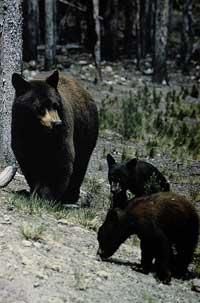
In the other three cases, the animal abandons homeothermal processes and, like the poiquilothermal ones, adapts the temperature of its body to that of the medium. Some manage to keep them at about 5ºC.
The rate of metabolism decreases as the body temperature decreases. At the same time, food demand, heart rate, and breathing rate decrease. In this situation the animal does not respond to stimuli such as noise or touch.
If we approach an animal that hibernates (for example, the bat hanging in a cave) will not move at first. This does not mean that you do not perceive us: you need a time of adaptation to increase your metabolic rate, to accelerate the speed of heartbeat, in short, to alert us.
During the winter, for a few days the body temperature varies with that of the medium; this process is called hibernation. If the temperature change occurs in summer, stow. On other occasions, the body temperature varies with that of the medium without taking into account the season of the year and only at a time of the day: then we will call lethargy of the day. In the graph on the left you can see a record of the temperature of the pygmy rat, in which you can see the abrupt drop in the temperature of the animal at the beginning of the lethargy.
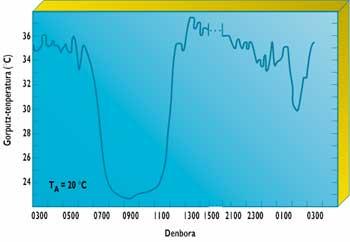
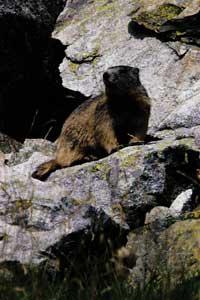
The animal spends part of the day in the “lethargy of the day”, so it is also homeoteric in the part of the day that is fully active. The rats of the genus Paramyscus, for example, are nocturnal and in a state of lethargy enter the first hour of the morning and thus continue until the afternoon, when it becomes homeoteric to fulfill its functions.
Some bats, on the other hand, in summer tend to have “lethargy of the day” and in winter hibernation if the temperature is relatively cold, otherwise they can enter lethargic state. Hibernation known in hamsters, squirrels, lirrels, some marmots, hedgehogs (usually of insectivorous animals), bats, monotremados and some marsupials.
Most hibernating animals are small because of their high metabolic rate, they need a lot of food. High latitude insectivores can find little food throughout the winter, so without hibernation bats and other insectivores such as hedgehogs could not live.
However, we could not say that the bear is hibernating. Your body temperature drops to little degree and the metabolic rate decreases very little; females often have their offspring in winter.
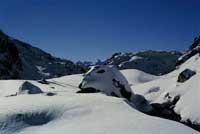
These animals, a few months before the time of hibernation, accumulate fat in the body and during the winter they will use all this food. Hibernation is interrupted periodically and then the urine and feces are expelled by eating the food they contain in their caves.
Both hot and cold, the lethargy of the day appears in numerous mammals and birds. Many bats make lethargy in hours of light and wake up at night to go for food.
Controlled hypothermia is considered to occur daily among birds. Many hummingbirds spend every night in the stomach if the amount of food is not entirely adequate. Lethargy has also been observed in blacks.
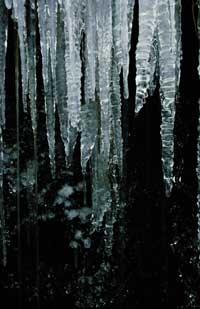
The ability to wake up from hypothermia is very important, as food collection, fertilization and other important functions are only given in homeoteric times. The minimum body temperature required to wake up from lethargy is very different depending on the species. Many hibernators have enough body temperature 5°C, but the Californian rat ( Perognathus californicus) does not wake up if the temperature is less than 15°C. Lethargy awakening is accompanied by a very strong and sudden metabolic force. This strength, on the other hand, is due to a vibration-free thermogenesis.
Although food is sufficient, some small species, such as Peromyscus rats and insectivorous mice, present a daily lethargy that reduces their energy demands. Other animals only use lethargy when food is reduced. What causes hypothermia, hibernation and stowage is changing the temperature and duration of the day. Through them, animals respond to events that announce the arrival of bad times of the year. This knowledge is a remarkable advantage for these animals, that is, being able to perform a physiological preparation. Hibernators develop typical fat accumulations as winter approaches.
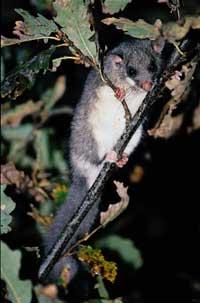
If a hibernating mammal wants to increase its temperature, it should resort to the energy source. In addition to movement, there are two important ways to get more heat: thermogenesis without vibrations or vibrations.
Vibrating is a way to get heat. This is achieved by muscle contractions. The nervous system activates several muscles. Thus, the activated muscle does not create work, but heat. This type of thermogenesis is used by insects and vertebrates.
In vibration-free thermogenesis, brown fat is activated to obtain heat. This type of fat accumulates in the neck and on the shoulder. Reactions in thermogenesis cause warming of this tissue. This newly produced heat is distributed through veins to other body tissues due to the large amount of brown fat it contains.
Lozorro mammals or hibernations use this type of thermogenesis a lot to wake up, especially when a quick warming is desired.

Gai honi buruzko eduki gehiago
Elhuyarrek garatutako teknologia



